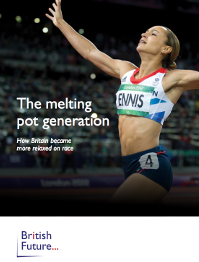Identity, dislocation and belonging: Chinese/European narratives of mixedness in Aotearoa/New ZealandPosted in Articles, Asian Diaspora, Identity Development/Psychology, Media Archive, Oceania on 2012-12-22 22:34Z by Steven |
Identities: Global Studies in Culture and Power
Published online: 2012-12-14
DOI: 10.1080/1070289X.2012.752369
Zarine L. Rocha, Research Scholar
Department of Sociology
National University of Singapore
With over 10% of the population identifying with multiple ethnic groups, identities in New Zealand are increasingly complex. This article explores identifications of individuals of mixed Chinese and European descent: the ways in which personal location, classification and race influence feelings of belonging within and between multiple ethnic groups. The fluidity and diversity of the New Zealand context and the resulting positioning of ‘mixed race’ provide an interesting counterpoint to the comparatively well-studied American and British contexts. Drawing on 20 interviews with individuals of mixed descent, this research highlights how individual identity diverges from official classification and how this dissonance is understood through experiences of dislocation and belonging. ‘Mixedness’ is negotiated and enacted in many ways, as individuals find ways to belong in the face of wider dislocation, intertwining aspects of heritage, experience, community and nation.
Introduction
With over 10% of the New Zealand population identifying with more than one ethnic group (Statistics New Zealand 2006), identities in New Zealand are becoming increasingly complex. Following shifts in immigration policy, the population has become more diverse and understandings of ethnic identity and belonging have developed and changed. Similar changes have occurred in other multicultural societies around the world and as a result, the concepts of ‘mixed race’ and ‘mixed ethnicity’ are of increasing academic and political concern, particularly in the American and British contexts (see Ifekwunigwe 2004, Parker and Song 2001b).
The New Zealand population provides an illuminating case study in this field, highlighting the intersections and divergences between ethnic identifications and systems of ethnic and racial classification. The increasing prominence of ”mixed race’ identities challenges traditional racial categorisation, and changes in the American and British censuses in 2000/2001 allowed respondents to acknowledge ‘mixed race’ in official classification (Aspinall 2009. Perlmann and Waters 2002). New Zealand is important in comparison, as a context where multiple identities have been formally recognised for an extended period of time: both historically in categorisations of ‘half-castes‘ and more recently as multiple, self-ascribed identities in the census since 1991 (Callister and Kukutai 2009. Morning 2008). Despite the official recognition of multiplicity, social conceptions of racial singularity…
Read or purchase the article here.

